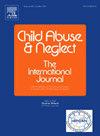Educational outcomes of care leavers and their matched peers: A gender perspective
IF 3.4
2区 心理学
Q1 FAMILY STUDIES
引用次数: 0
Abstract
Background
Educational gaps between care leavers and their same-age peers not in care are well documented. However, little is known about gender disparities in educational outcomes between care leavers and their matched peers.
Objectives
To examine and predict secondary school educational attainments (EA) and enrollment in postsecondary education (PSE) by (1) study group: care leavers versus their matched peers, (2) gender: men versus women, (3) interaction between study group and gender.
Participants and setting
Participants were alumni of educational (n = 21,654) and therapeutic (n = 3765) residential care facilities from 16 consecutive birth cohorts and same-age doubled-sized matched comparison groups (n = 43,308; n = 7530, respectively).
Methods
Bivariate analyses examined differences in secondary school EA and PSE enrollment, and multinomial and binary logistic models predicted secondary school EA and PSE enrollment.
Results
Care leavers from both residential settings showed poorer secondary school EA and lower PSE enrollment rates than their matched peers. Gaps between the study groups were far more pronounced in therapeutic facilities than in educational facilities. Women from all study groups outperformed men in both outcomes. Generally, there were greater disparities between female care leavers and their same-sex peers than between male care leavers and their same-sex peers, particularly in therapeutic settings. A complex pattern of interaction between study group and gender emerged in both residential settings.
Conclusions
Greater efforts and resources should be allocated to promote adolescents' academic performance in both types of settings to minimize the gaps between care leavers and their matched peers and between women and men, with special attention to men in therapeutic facilities.
求助全文
约1分钟内获得全文
求助全文
来源期刊

Child Abuse & Neglect
Multiple-
CiteScore
7.40
自引率
10.40%
发文量
397
期刊介绍:
Official Publication of the International Society for Prevention of Child Abuse and Neglect. Child Abuse & Neglect The International Journal, provides an international, multidisciplinary forum on all aspects of child abuse and neglect, with special emphasis on prevention and treatment; the scope extends further to all those aspects of life which either favor or hinder child development. While contributions will primarily be from the fields of psychology, psychiatry, social work, medicine, nursing, law enforcement, legislature, education, and anthropology, the Journal encourages the concerned lay individual and child-oriented advocate organizations to contribute.
 求助内容:
求助内容: 应助结果提醒方式:
应助结果提醒方式:


